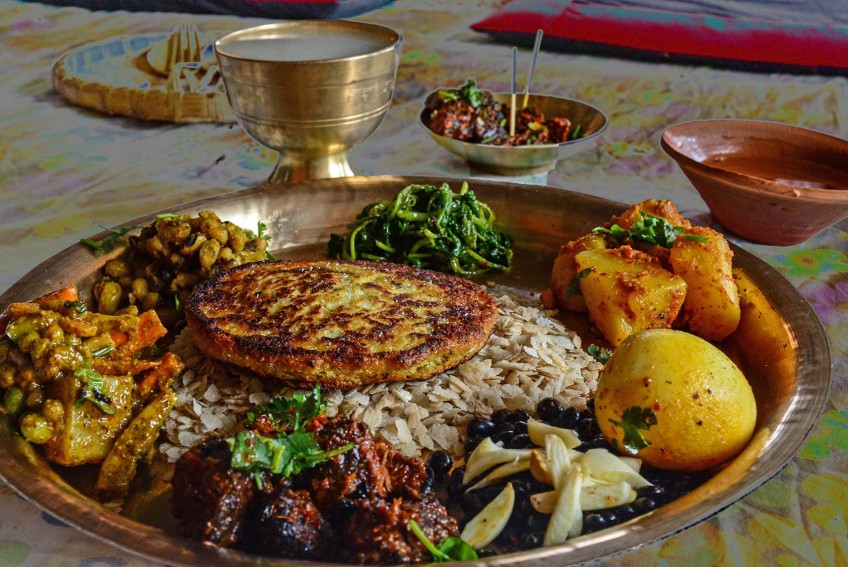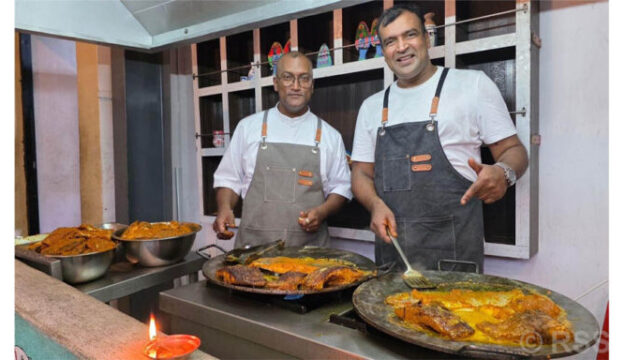Nepal, a country known for its majestic Himalayas, rich cultural heritage, and vibrant festivals, also offers a culinary scene that is as diverse and captivating as its landscapes. For tourists eager to delve into the local food culture, Nepal provides an array of flavors and dishes that reflect its multi-ethnic tapestry. This guide aims to help visitors navigate Nepal’s culinary offerings, ensuring a memorable and delicious journey.
At the heart of Nepali cuisine is Dal Bhat, a traditional meal consisting of steamed rice (bhat) and lentil soup (dal). Typically served with a variety of accompaniments such as vegetables (tarkari), pickles (achar), and sometimes meat or fish, Dal Bhat is more than just a meal—it’s a cultural experience. Every region in Nepal adds its unique twist to this staple, making it a must-try for every tourist.
Another quintessential Nepali dish is Momo, a type of dumpling filled with either meat or vegetables. Often served with a spicy dipping sauce, Momos are a popular street food that can be found in almost every corner of the country. Whether steamed or fried, these dumplings are a favorite among locals and visitors alike.
For those looking to explore traditional rural cuisine, Gundruk (fermented leafy greens) paired with Dhido (a thick porridge made from buckwheat or millet) offers a unique taste of Nepal’s agricultural roots. This dish is especially popular in the mountainous regions and provides a hearty, nutritious meal.
Kathmandu Valley is the heartland of the Newar people, whose culinary traditions are a highlight of Nepali cuisine. Newari food is known for its rich flavors and variety. Key dishes include Chatamari (a rice flour crepe often topped with minced meat and egg), Yomari (a sweet dumpling filled with molasses and sesame seeds), and various buffalo meat delicacies like Chhoila and Sukuti.
Originating from the Thak Khola region of Mustang, Thakali cuisine has gained nationwide popularity. It is characterized by its use of locally sourced ingredients and simple, yet flavorful preparation. A typical Thakali meal includes Dal Bhat with various side dishes such as gundruk ko achar, leafy greens, and pickles, served in a traditional Thakali set.
In regions like Mustang, Dolpo, and Humla, Tibetan culinary influences are prominent. Tourists can enjoy Tibetan staples such as Thukpa (noodle soup), Tsampa (roasted barley flour), and Butter Tea (yak butter and salt mixed with tea), offering a glimpse into the culinary traditions of Nepal’s Himalayan communities.
To truly immerse in Nepali cuisine, tourists can participate in cooking classes offered in major cities like Kathmandu and Pokhara. These classes provide hands-on experience in preparing traditional dishes, guided by local chefs who share their culinary secrets and stories. This not only enhances the appreciation of the food but also provides a souvenir that can be recreated back home.
Exploring street food is an exciting way to experience Nepal’s culinary diversity. In bustling markets like Ason Bazaar in Kathmandu or Lakeside in Pokhara, tourists can sample a variety of snacks and meals. From Sel Roti (sweet rice doughnut) to Pani Puri (crispy puris filled with spicy water), street food tours offer a delightful and adventurous gastronomic journey.
With the growing trend of sustainable tourism, farm-to-table experiences are gaining popularity in Nepal. Many rural homestays and eco-lodges offer visitors the chance to harvest fresh ingredients and learn traditional cooking methods directly from local farmers. This experience not only supports local communities but also ensures a fresh and authentic taste of Nepali cuisine.
Nepal boasts a wide range of dining options, from upscale restaurants in Kathmandu’s Thamel district to cozy cafes in Pokhara. Many restaurants specialize in traditional Nepali cuisine, while others offer fusion dishes that blend local flavors with international techniques. Popular spots include Bhojan Griha in Kathmandu, known for its cultural dining experience, and Moondance Restaurant in Pokhara, which offers both Nepali and international cuisine with stunning lake views.
For trekkers, the ubiquitous tea houses along popular trails like the Annapurna Circuit or Everest Base Camp provide not just accommodation but also hearty meals. Tea houses serve simple yet delicious dishes such as Dal Bhat, noodles, and Tibetan bread, providing much-needed nourishment and warmth after a day of trekking. The communal dining experience also allows tourists to connect with fellow trekkers and share stories over a meal.
Nepal’s festivals are an excellent opportunity to explore its culinary heritage. During festivals like Dashain, Tihar, and Teej, special foods are prepared and shared among families and communities. Tourists visiting during these times can experience traditional festive dishes such as Sel Roti, Aloo Tama (potato and bamboo shoot curry), and various sweets. Participating in these celebrations provides a deeper understanding of the cultural significance of food in Nepali society.
While exploring street food and local eateries, tourists should take certain precautions to ensure a safe culinary adventure. It’s advisable to drink bottled or purified water and choose food stalls that are busy and have a high turnover, indicating fresh ingredients. Peeling fruits and avoiding raw vegetables can also help prevent stomach issues.
Nepal is accommodating to various dietary preferences, including vegetarian and vegan diets. Many traditional Nepali dishes are naturally vegetarian, and most restaurants offer vegetarian options. Communicating dietary restrictions clearly to restaurant staff will ensure a pleasant dining experience.
Understanding local dining etiquette enhances the culinary experience. In Nepal, it is customary to wash hands before and after meals, as food is often eaten with hands. Sharing food from the same plate or bowl is a common practice, symbolizing hospitality and community. Respecting these customs and showing gratitude for the meal aligns with the cultural values of Nepali society.
Exploring Nepal’s culinary scene is a journey through its rich cultural and geographical diversity. From traditional dishes like Dal Bhat and Momo to regional specialties and festive foods, Nepal offers a plethora of flavors waiting to be discovered. By engaging in cooking classes, street food tours, and farm-to-table experiences, tourists can immerse themselves in the authentic tastes and traditions of Nepal. With a spirit of adventure and respect for local customs, visitors can savor the true essence of Nepali cuisine, making their trip an unforgettable gastronomic adventure.






